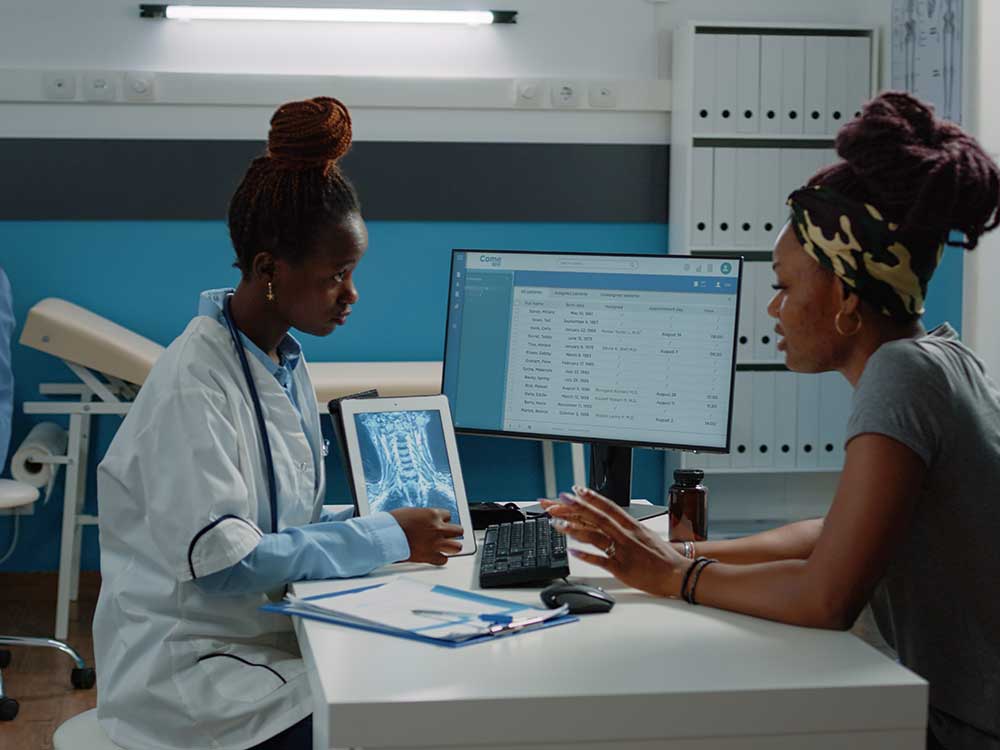Finest Practices in Medical Administration for Improving Performance and Reducing Expenses
In the ever-evolving landscape of health care, the quest of ideal techniques in clinical management is paramount for improving performance and suppressing expenses. By integrating sophisticated modern technologies such as digital health records and telemedicine, healthcare suppliers can enhance procedures and improve client treatment. However, modern technology alone is not a cure all; enhancing source appropriation and cultivating joint interaction among care teams are just as critical (medical administration). As companies aim to stabilize top quality and expense, what techniques should be prioritized to achieve these double goals? The response to these concerns hold the trick to a more lasting medical care system.
Leveraging Advanced Technology
In today's quickly developing health care landscape, leveraging innovative technology is no longer optional but vital for reliable medical management. The combination of electronic remedies right into medical care systems has actually changed the way centers operate, enhancing procedures and improving individual treatment. Electronic Health And Wellness Records (EHRs) are crucial, offering comprehensive individual data that can be accessed instantly by licensed personnel, thus lowering redundancy and reducing errors. By systematizing patient information, EHRs eliminate the need for cumbersome documents and assist in seamless interaction amongst doctor.
Telemedicine is one more technical improvement that has reinvented person communication. It supplies ease for both individuals and healthcare professionals by allowing remote appointments, which can decrease the demand for in-person brows through and maximize appointment organizing. Additionally, telehealth platforms can prolong healthcare access to country or underserved locations, linking spaces in care shipment.
Moreover, making use of Artificial Knowledge (AI) and equipment knowing is coming to be progressively common in predictive analytics, permitting for very early detection of prospective health concerns and even more educated decision-making. These modern technologies, when incorporated successfully, can improve analysis accuracy and individualize patient treatment plans, eventually bring about enhanced health care outcomes and operational performance.
Optimizing Source Allowance
Efficient source allowance is critical for making the most of the effectiveness of medical management. By purposefully handling resources such as employees, devices, and funds, health care centers can significantly enhance their functional performance, enhance person end results, and decrease unneeded expenses. The primary step in optimizing resource allocation entails carrying out an extensive analysis of existing possessions and identifying locations where sources might be underutilized or exhausted. This analysis ought to be data-driven, utilizing metrics and analytics to educate decision-making procedures.
Prioritizing source allotment based on client requirements and solution demands is crucial. This entails lining up sources with high-demand locations, such as emergency situation treatment or specialized therapies, to make sure timely and effective person treatment. Executing flexible staffing versions can likewise enhance labor sources by readjusting personnel allotment in reaction to rising and fall person quantities. In addition, welcoming telemedicine and various other technical remedies can ease physical resource constraints by using alternate methods for patient-provider communications.
Financial sources should be carefully kept track of and allocated with strategic insight to sustain both short-term functional demands and long-lasting institutional objectives. This consists of investing in training programs that boost staff competencies and adopting energy-efficient techniques that decrease operational expenses (medical administration). Inevitably, an optimized resource allotment method fosters a sustainable medical care environment that is receptive, effective, and monetarily sensible
Streamlining Process Procedures
When health care centers aim to boost operational effectiveness, simplifying process processes becomes a pivotal focus. Reliable operations decrease redundancy, eliminate unnecessary steps, and improve coordination among healthcare experts. This approach not only accelerates solution shipment however also improves the quality of basics patient care.

Next, modern technology integration plays a substantial function in enhancing operations. Carrying out electronic wellness documents (EHRs) and electronic doctor order access (CPOE) systems minimizes documentation, minimizes human error, and makes certain info is accessible to all relevant personnel. Furthermore, leveraging telemedicine platforms can enhance person consultations and follow-ups, lowering the pressure on physical framework.

Eventually, streamlined process result in cost reductions and improved client complete satisfaction, cultivating an extra sustainable health care setting.
Enhancing Information Monitoring
Building upon structured process, enhancing information monitoring ends up being an essential part ahead of time healthcare management. Effective information management systems are critical for preserving best site accurate person records, enhancing decision-making, and ensuring compliance with regulative criteria. By carrying out durable information management options, healthcare centers can improve the top quality of person care while simultaneously reducing operational expenses.
One trick facet of boosting information monitoring is the assimilation of sophisticated digital health record (EHR) systems. These systems help with the smooth exchange of individual information throughout different departments, minimizing duplication of tests and minimizing errors. A well-designed EHR system sustains information analytics, allowing health care suppliers to identify patterns and make informed choices concerning client treatment.
Additionally, safeguarding person information is extremely important. Taking on thorough cybersecurity actions, consisting of security and routine audits, guarantees the integrity and discretion of sensitive details. This not only protects clients yet additionally maintains the institution's credibility.
Buying staff training is another essential element. Enlightening healthcare specialists on information administration practices enhances their capability to efficiently make use of innovation, bring about boosted client results. Finally, enhancing information administration with advanced technology and comprehensive training is crucial for accomplishing performance and price reduction in medical administration.
Fostering Collaborative Communication
An essential part ahead of time medical management is fostering joint communication amongst healthcare professionals. Effective interaction is extremely important for making certain smooth client care, maximizing treatment results, and minimizing mistakes. By motivating open discussion and sychronisation across multidisciplinary teams, healthcare companies can boost their functional efficiency and minimize unneeded expenses.
Central to this strategy is the combination of communication modern technologies such as electronic health and wellness records (EHRs) and safe and secure messaging platforms, which promote the rapid exchange of essential client info. These tools allow medical care companies to accessibility and share information in real time, ensuring that all employee are educated and aligned in their decision-making procedures. Routine team conferences and interdisciplinary rounds can even more advertise a culture of collaboration and accountability.
Training programs focused on enhancing interaction skills are additionally necessary. These programs can assist personnel establish the capability to browse around this site share details clearly and pay attention proactively, hence reducing misconceptions and cultivating a helpful workplace. Furthermore, taking on standard interaction procedures, such as SBAR (Scenario, Background, Evaluation, Referral), can enhance the exchange of info, ensuring that crucial information are conveyed succinctly and effectively. Inevitably, promoting joint interaction results in boosted medical care shipment and price financial savings (medical administration).

Final Thought
Incorporating innovative innovation, such as digital health and wellness records and telemedicine, along with optimized source allocation and streamlined process procedures, is important for improving efficiency in clinical administration. Effective information management and cultivating joint interaction amongst medical care groups are crucial for minimizing redundancies and enhancing care top quality. By focusing on precautionary treatment and participating in top quality renovation initiatives, healthcare organizations can attain substantial cost savings and boosted client end results, consequently guaranteeing lasting medical care shipment in a significantly complex setting.